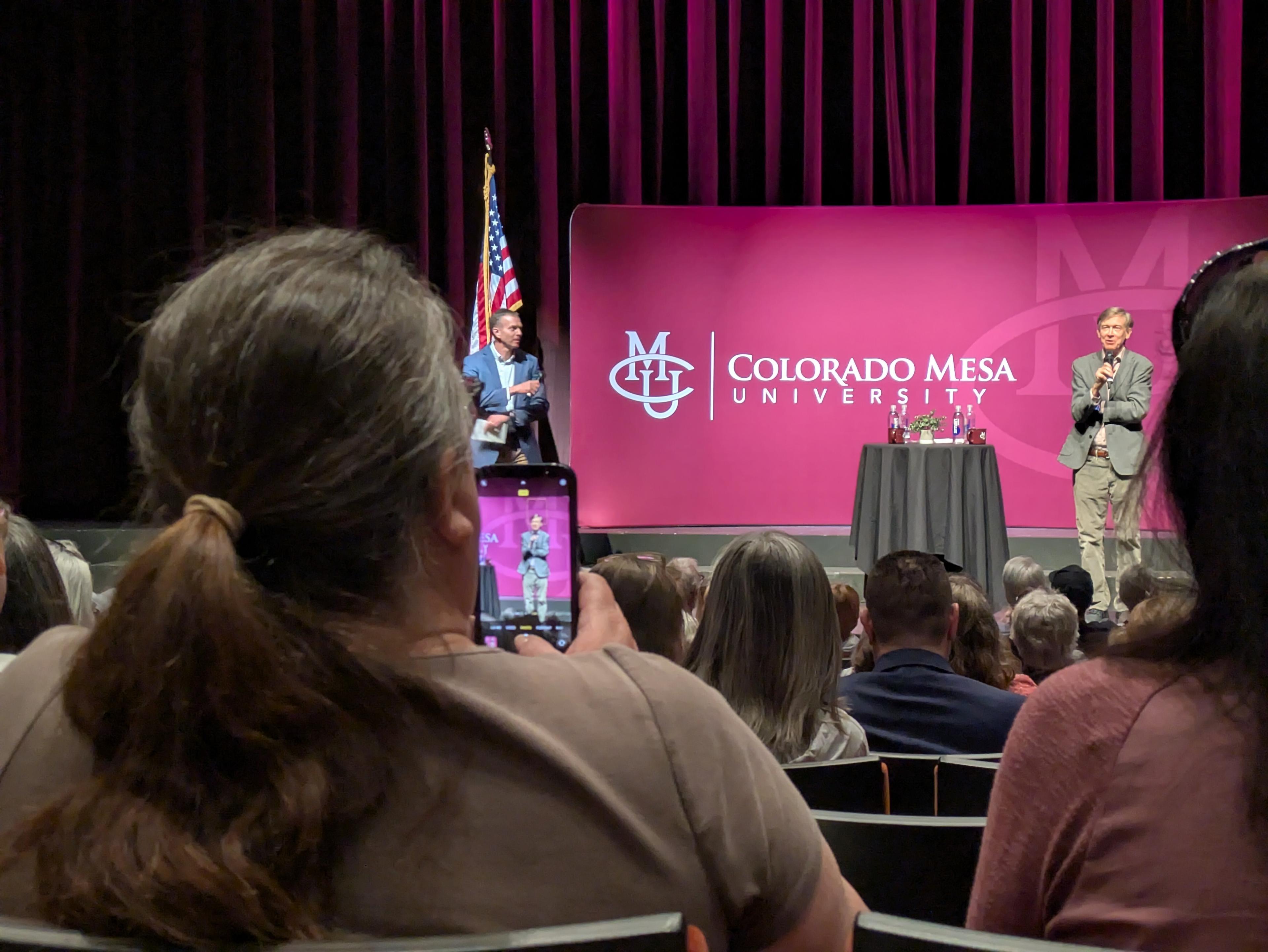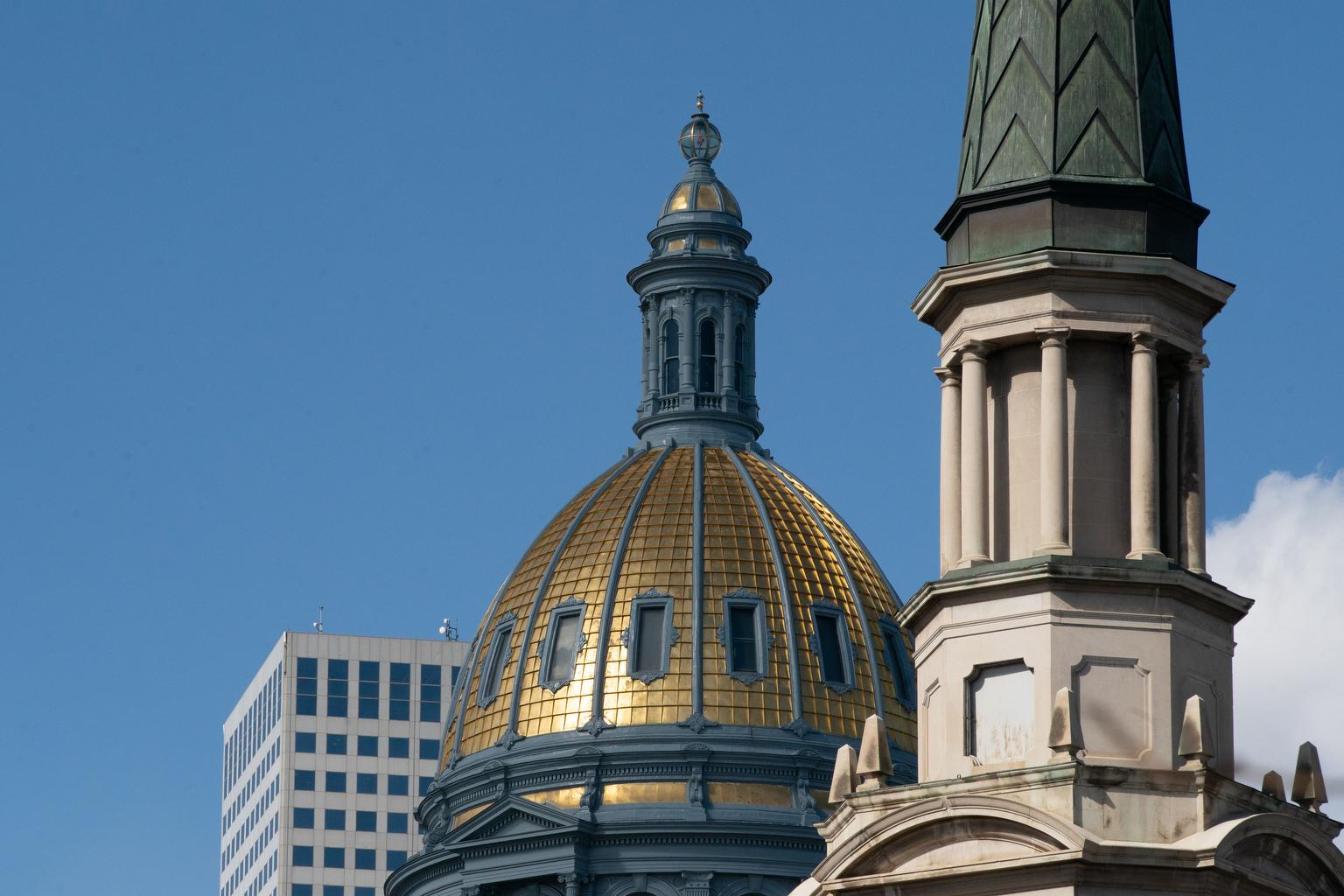
The American frontier was a bloody battlefield in the late 1800s, as white settlers pushed westward and shoved Native Americans off of their lands.
Two iconic characters fought on either side of that divide. Sitting Bull, the young and powerful leader of the Lakota Sioux, who was wrongly believed to have killed General George Custer at the Little Bighorn, and Buffalo Bill Cody, a flamboyant cowboy who killed thousands of the buffalo treasured by Native Americans as a spiritual figure and a crucial food source.
When the wars ended, the two men shared fame and, it turns out, a strange friendship. Together, they starred in Cody's Wild West Show, which drew an audience of a million people one year.
Author Deanne Stillman tells Colorado Matters the story ended with Sitting Bull's murder and the mystical dance of a horse Cody had given the chief. Stillman is the author of "Blood Brothers: The Story of the Strange Friendship Between Sitting Bull and Buffalo Bill."
Read an excerpt:
For each of my books, there has been a precipitating incident that has caused me to venture into that particular story. The incidents are similar, for they involve acts of violence, the killing of people, wild animals, assaults on the land, and these acts have unfolded on a very big canvas, the American West. It is across this terrain that I see the incidents taking place, moments or months or years after they have happened; that is to say that I can literally picture them, in bas-relief, as the consequence of forces and matters that have long been in play, and when this picture begins to form, I know that the incident will become the prism through which I will tell my next story and there is no turning back. Some time ago, while working on my book “Mustang: The Saga of the Wild Horse in the American West,” I learned about a strange and heartbreaking moment that had transpired outside Sitting Bull’s cabin while he was being assassinated during an attempted arrest. A horse was tethered to a railing, and at the sound of gunfire he started to “dance,” trained to do such a thing while he was in the Wild West, Buffalo Bill’s famous spectacle of which Sitting Bull was a part for four months during 1885. I couldn’t shake the image and as I began to look into it, I learned that the horse was a gift to Sitting Bull from Buffalo Bill, presented to Sitting Bull when he left the show to go home. The fact that Buffalo Bill had given Sitting Bull a horse upon his departure was significant. This was the animal that transformed the West — and was stripped from the tribes in order to vanquish them. It was a gift that Sitting Bull treasured, along with a hat that Cody had given him as well. After Sitting Bull was killed, Buffalo Bill bought the horse back from Sitting Bull’s widows and according to some accounts rode it in a parade. And then the horse disappears from the record. It was the legend of the dancing horse that led me into the story of Sitting Bull and Buffalo Bill, for it symbolized so much. As I thought about the steed outside Sitting Bull’s dwelling as his killing was under way, a portal into something else opened up — exactly what, I was not sure of at the time, other than the fact that here was my next story, and it was calling and at some point I would head on down its trail. Later, as I was well along this path, I came across another image. It’s now on the cover of this book, and it too captured my attention. It was taken for publicity purposes while Sitting Bull and Buffalo Bill were on tour in Montreal, and its caption was “Foes in ’76, Friends in ’85.” I began to imagine these two men on the road, Sitting Bull on that horse, crisscrossing the nation, visiting lands that once had belonged to the Lakota, appearing as “himself” on crowded thoroughfares that were built on top of ancient paths made by animals and the people who followed them, with William F. Cody, another mythical figure of the Great Plains, reenacting wartime scenarios that had one outcome — the end of the red man and the victory of the white — leading the whole parade in a celebration of the Wild West that became the national scripture. What were the forces that brought these two men together, I wondered, and what was the nature of their alliance? Were they each trapped in a persona, a veneer that was somewhat true? And behind the myths, the projected ideas in which they were preserved, who were they in day-to-day life? Theirs was certainly an unlikely partnership, but one thing was obvious on its face. Both had names that were forever linked with the buffalo (“Sitting Bull” refers to it, something that is not readily apparent from the name itself), and both led lives that were intertwined with it. One man was “credited” with wiping out the species (though that was hardly the case) and the other was sustained by its very life. They were, in effect, two sides of the same coin; foes and then friends, just as the photo caption said. So this image too entered my consciousness; here were two American superstars, icons not just of their era and country, but for all time and around the world. What story was this picture telling and how was it connected to the dancing horse outside Sitting Bull’s cabin? |










